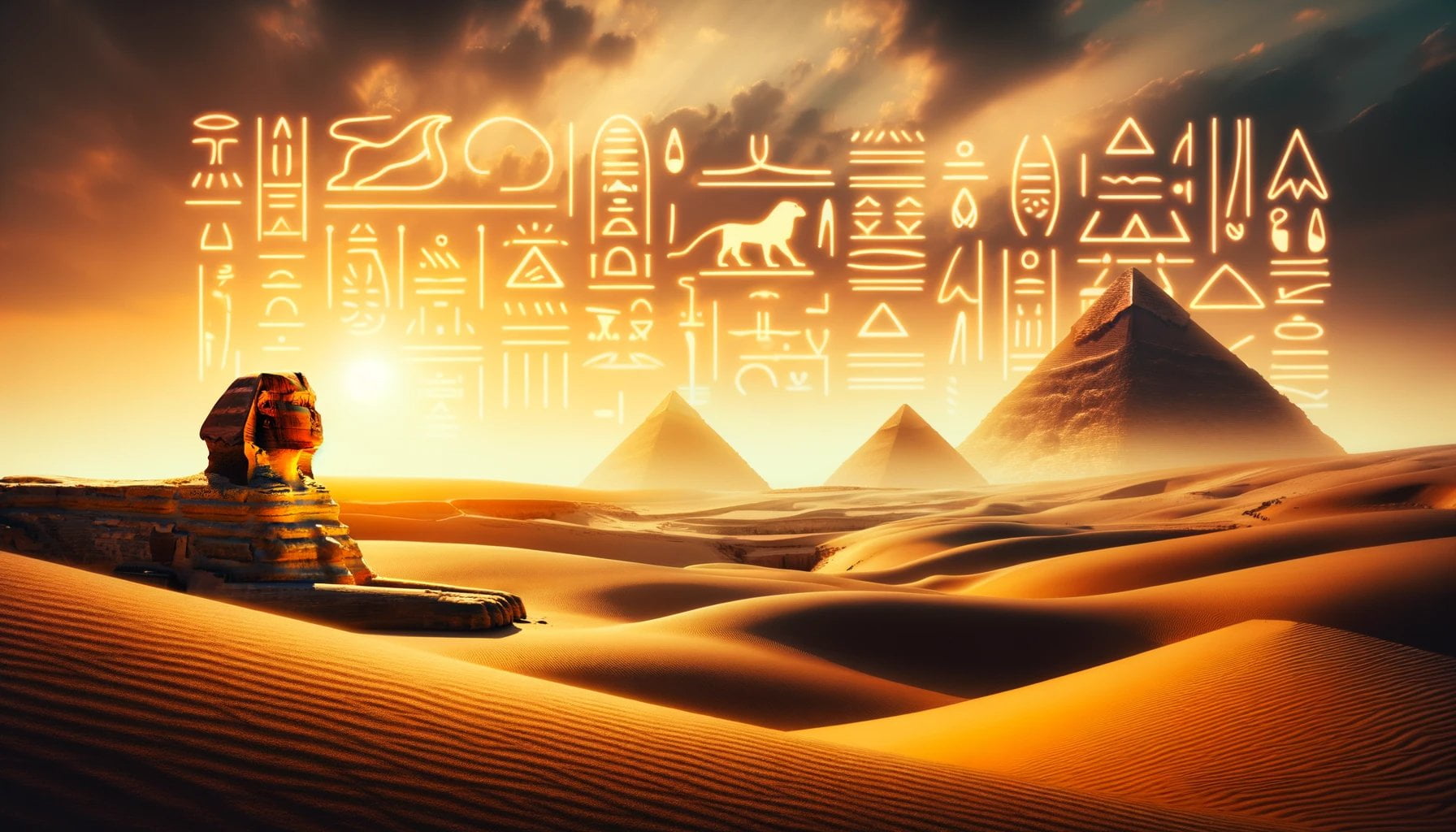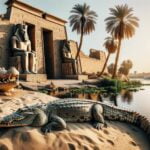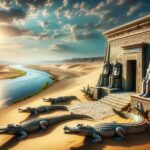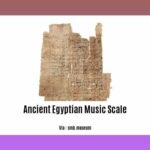The Supreme God of Ancient Egypt: Unveiling the Divine Enigma. Delve into the mystical realms of ancient Egypt as we journey to uncover the secrets surrounding the supreme god, the enigmatic deity that stood at the pinnacle of the Egyptian pantheon. From the great pyramids to intricate hieroglyphics, this article is your key to unlocking the profound significance and multifaceted role of the divine entity worshipped by the ancient Egyptians. Join us on this captivating exploration into the mythology and religious practices of one of the world’s most fascinating civilizations.
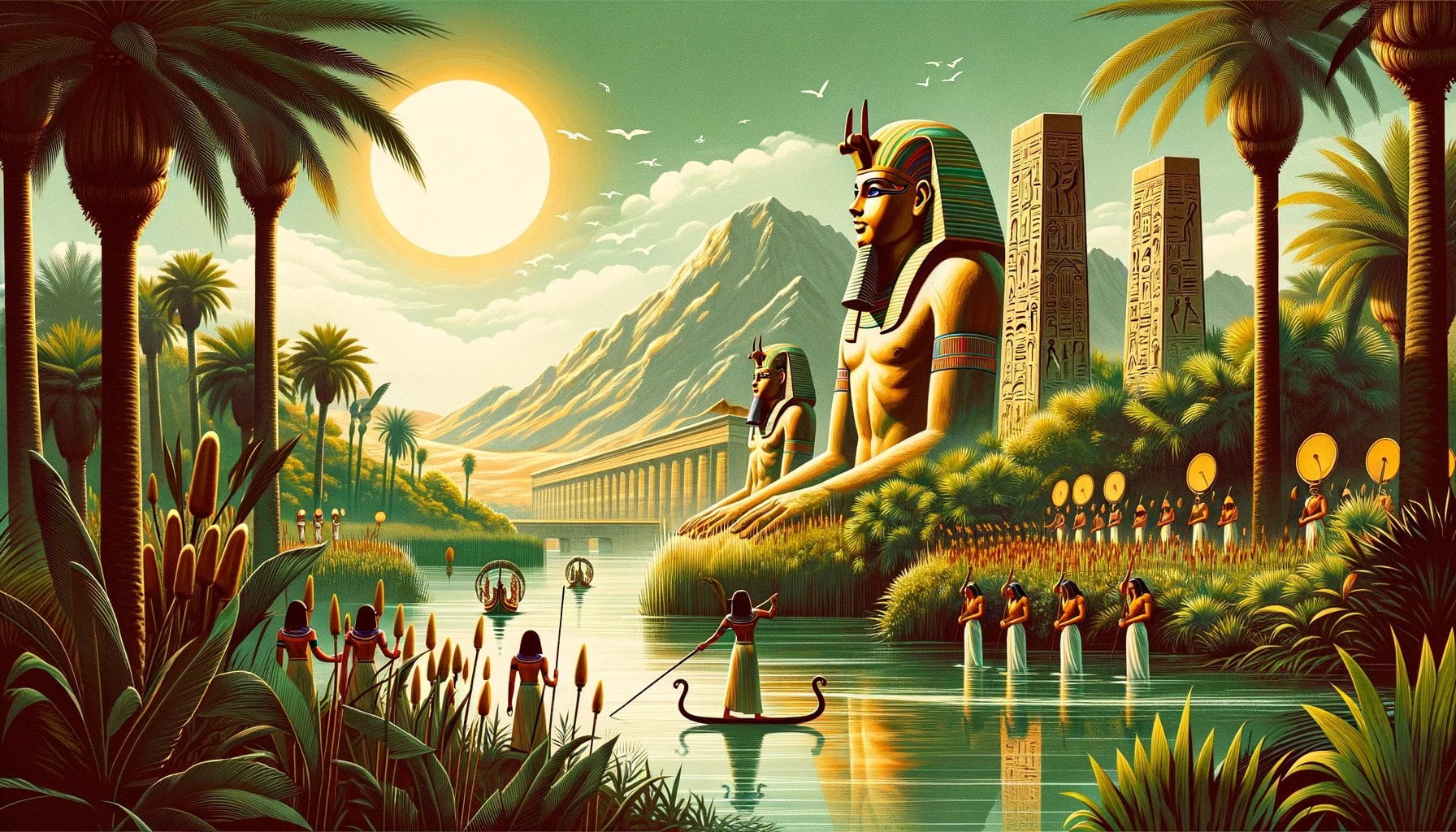
Key Takeaways:
- The concept of the supreme god was highly significant in ancient Egyptian religious beliefs.
- The pharaoh Akhenaten declared Aten to be the sole god of Egypt, making him the supreme deity.
- Prior to Aten, Amen-Ra was the supreme god of Egypt and was associated with power and vitality.
- Sources like Wikipedia’s article on Atenism and Crosswordeg’s information about the supreme god of ancient Egypt can provide further insights into these deities.
- Aten and Amen-Ra, as sun gods, played vital roles in shaping Egyptian religious practices.
- The representation of Aten and Amen-Ra as sun gods reflects the importance of the sun in ancient Egyptian culture.
The Supreme God of Ancient Egypt: Unveiling the Divine Enigma
Ancient Egypt, with its rich mythology and intricate religious practices, revered a supreme god who held great significance in their belief system. Throughout history, two notable deities have occupied this esteemed position ― Aten and Amen-Ra, both sun gods embodying power and vitality.
Aten: The Radiant Sun God
During the reign of the pharaoh Akhenaten in the 14th century BC, Aten rose to prominence as the supreme god of Egypt. This radical shift marked a departure from the polytheistic traditions that had previously defined Egyptian religious practices. Atenism, the worship of Aten as the sole deity, emphasized his role as the source of life and light.
But who was Aten? Represented as a solar disc with outstretched hands, Aten symbolized the sun’s life-giving rays and nourishing energy. The pharaoh served as the intermediary between the people and Aten, further cementing the divine authority and influence of the supreme god.
Amen-Ra: The Majestic Sun God
Before Aten’s rise, Amen-Ra held the title of the supreme god in ancient Egypt. As part of the Ogdoad, a group of eight deities representing the creation of the world, Amen-Ra was closely associated with power and vitality. Depicted as a hawk, lion, or cat, these fierce and majestic animals represented the grandeur and dominance of Amen-Ra.
Exploring the ancient Egyptian pantheon is a fascinating endeavor that deepens our understanding of Aten and Amen-Ra as the supreme deities. Their significance in shaping religious practices cannot be understated, and their representation as sun gods illuminates the central role the sun played in ancient Egyptian culture.
To delve further into the topic, the following sources provide valuable insights:
- Atenism – Wikipedia: This comprehensive Wikipedia article offers detailed information on the religious practices and beliefs associated with Aten, the sun god elevated to the position of the only god by Akhenaten.
- Supreme god of ancient Egypt – Crosswordeg: This source sheds light on the concept of the supreme god in ancient Egypt, highlighting Amen-Ra as the revered deity.
By unraveling the mysteries surrounding the supreme gods of ancient Egypt, we gain valuable insight into the intricate religious tapestry that defined this remarkable civilization. Aten and Amen-Ra, as the pinnacle of divine worship, embody the spiritual beliefs and cultural legacy of the ancient Egyptians.
Citations:
[^1^]: “Atenism – Wikipedia”. Wikipedia.
[^2^]: “Supreme god of ancient Egypt – Crosswordeg”. Crosswordeg.
In ancient Egypt, magic played a significant role in their society and beliefs. Discover the wonders of magic in ancient Egypt by exploring our article on magic in ancient Egypt.
Experience the ancient legal system through the “10 Laws of Ancient Egypt.” Dive into the historical significance of these laws by clicking on 10 laws of ancient Egypt.
One creature heavily venerated in ancient Egypt was the bird. Uncover the spiritual connection between birds and the ancient Egyptians by delving into our article on the bird venerated in ancient Egypt.
The crocodile god, Sobek, held immense importance in ancient Egyptian mythology. Explore the mysteries and legends surrounding this fascinating deity by clicking on crocodile god ancient Egypt.
Believe it or not, toothpaste had a place in ancient Egypt! Learn about the ancient Egyptians’ dental hygiene practices and the origins of toothpaste in our article on toothpaste ancient Egypt.
While ancient Egypt was an extraordinary civilization, it had its share of dark aspects. Discover the lesser-known and intriguing aspects of ancient Egypt by exploring our article on bad things about ancient Egypt.
Black cats, often associated with superstitions, held a special significance in ancient Egypt. Uncover the ancient Egyptians’ reverence for black cats by clicking on black cat ancient Egypt.
Delve into the lives of the powerful ancient queens of Egypt. Discover their incredible legacies and the impact they had on Egyptian society by exploring our article on ancient queens of Egypt.
Unearth the mysteries that still surround ancient Egypt. From hidden treasures to enigmatic practices, explore the compelling secrets in our article on mysteries of ancient Egypt.
Snakes held both fear and reverence in ancient Egypt. Learn about the symbolism and significance of snakes in Egyptian culture by clicking on snakes of ancient Egypt.
The Supreme God of Ancient Egypt: Unveiling the Divine Enigma
Ancient Egyptian history is rich with intriguing tales of gods and goddesses that held great significance in the belief system of this ancient civilization. Among these divine beings, there existed a supreme god who embodied the power and authority associated with the universe. Let us delve into the mysteries surrounding this supreme god and explore their role within ancient Egyptian society.
Ancient Egyptian Gods and Their Position in Divine Society
In the pantheon of ancient Egypt, the gods held the highest positions within the divine society. They were revered as divine beings with immense power and influence. The highest deity, often recognized as the supreme god of the universe, played a pivotal role in the mythology and religious practices of the ancient Egyptians. This divine entity was associated with creation, the sun, and symbolized the essence of life and authority.
The Enigmatic Deities: Ra, Amun, and Aten
Among the gods who were considered the supreme god in ancient Egypt, three notable deities stand out: Ra, Amun, and Aten. Each of these gods represented different aspects of the supreme divinity and played crucial roles in shaping ancient Egyptian culture.
- Ra: Ra, the sun god, held the prestigious title of the supreme deity in ancient Egypt. He was revered as the creator of all life, embodying the life-giving power of the sun. Depicted with a falcon’s head bearing the solar disc, Ra was thought to journey across the sky during the day and traverse the underworld at night.
- Amun: Amun, initially a hidden deity, eventually ascended to the position of supreme god in the Egyptian pantheon. Seen as the ultimate source of creation, Amun’s true nature remained concealed even from the other gods. In the eyes of the ancient Egyptians, all the gods, including the other creators, were believed to be aspects of Amun. This belief elevated Amun to the prestigious status of the supreme god.
- Aten: Aten, a relatively obscure solar deity, rose to prominence during the reign of pharaoh Akhenaten in the 18th dynasty of the New Kingdom. Accelerating the rise of Aten was the pharaoh’s emphasis on his role as the source of life and light. Represented as a solar disc with outstretched hands, Aten symbolized the sun’s life-giving rays and nourishing energy.
Key Takeaways:
- Ancient Egypt revered a supreme god who held great significance in their belief system.
- The highest deity, often recognized as the supreme god of the universe, played a pivotal role in the mythology and religious practices of ancient Egypt.
- Notable supreme gods of ancient Egypt include Ra, Amun, and Aten.
- Ra, the sun god, was revered as the creator of all life and journeyed across the sky and underworld.
- Amun, an initially hidden deity, eventually became the supreme god, with all gods believed to be aspects of Amun.
- Aten, a solar deity, rose to prominence during the reign of pharaoh Akhenaten, symbolizing the sun’s life-giving rays.
References:
[^1^]: Wikipedia. “Ancient Egyptian deities.”
[^3^]: Wikipedia. “Ancient Egyptian creation myths.”
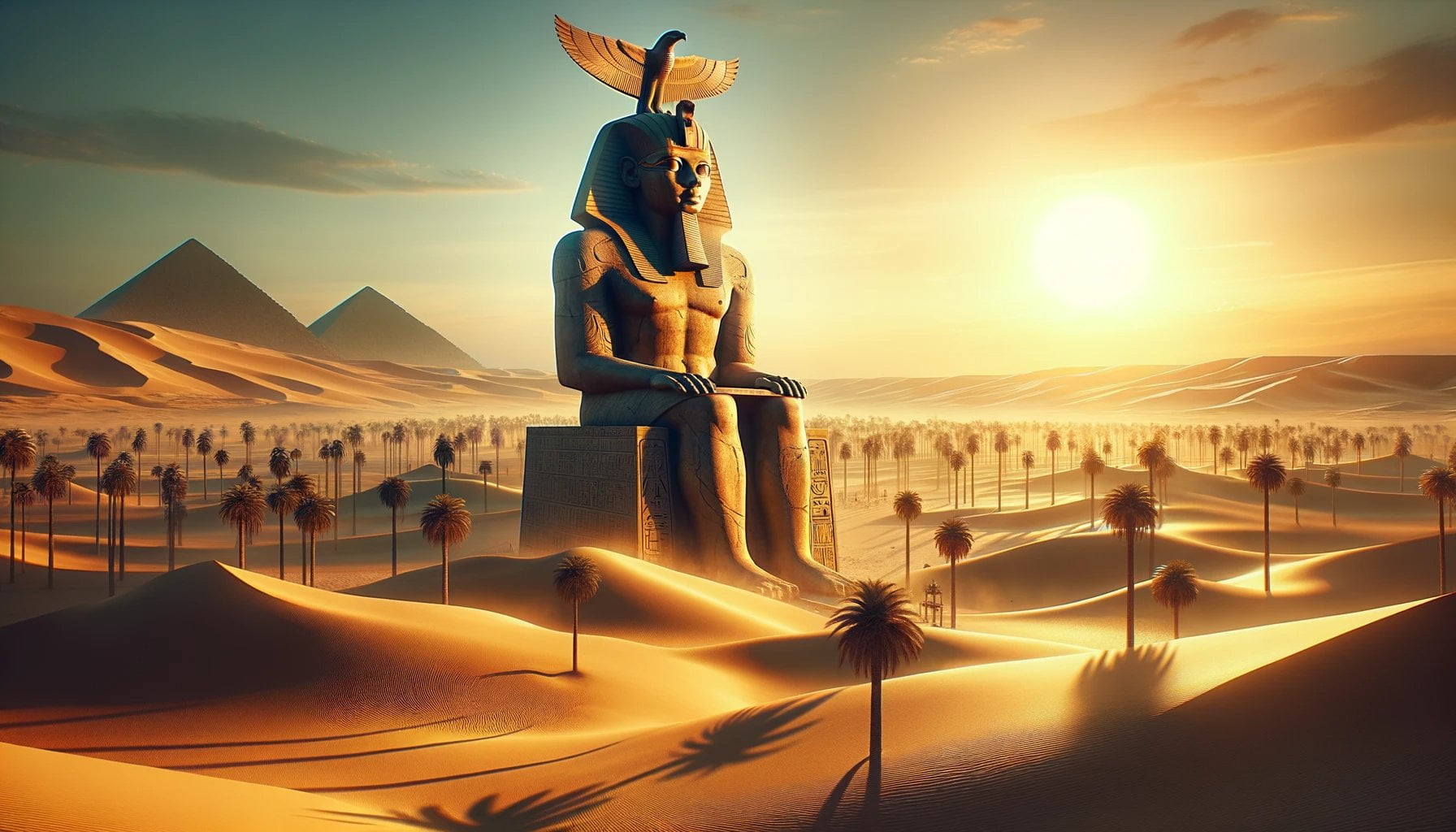
FAQ
Q1: Who were the supreme gods of ancient Egypt?
A1: The supreme gods of ancient Egypt were Aten, Ra, and Amun.
Q2: What is Atenism?
A2: Atenism is the religious practice and belief associated with Aten, the sun god who was declared as the only god by Akhenaten.
Q3: Who declared Aten to be the only god of Egypt?
A3: The pharaoh Akhenaten declared Aten to be the only god of Egypt in the 14th century BC.
Q4: What is the significance of Ra in ancient Egyptian culture?
A4: Ra was the sun god and the supreme Egyptian deity. He was worshipped as the creator of all life and symbolized divine authority.
Q5: How did Amun become the supreme god of the Egyptian pantheon?
A5: Amun, the ultimate source of creation, became the supreme god of the Egyptian pantheon as all the gods, including other creators, were believed to be aspects of Amun.
- Sept 31 Myth: Unveiling Calendar Secrets - March 18, 2025
- How Long & Till December 18, 2025: Accurate Countdown Guide - March 18, 2025
- Discover Japanese Artists: A Complete History - March 18, 2025
